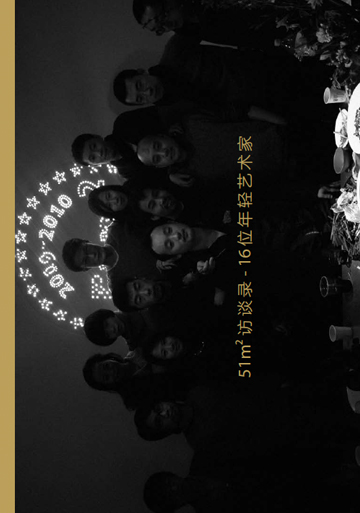51m² INTERVIEW – 16 EMERGING CHINESE ARTISTS
| June 27, 2011 | Post In LEAP 9
Established after Taikang Space moved to Caochangdi and named after the total floor area in the gallery’s space it occupied, 51m² was especially dedicated to holding exhibitions of young artists on a rolling basis. From October 17, 2009 until January 8, 2011, 51m² spanned fifteen months and ultimately played first home to the new works of sixteen young artists. Not long after shutting down, out of a need for official closure, Taikang Space invited all sixteen of these artists to participate in a 51m²-themed group exhibition. To mark the occasion, Taikang Space also publicly released a compilation of conversations between participating artists and curators Tang Xin Su Wenqing, titled 51m² Interview – 16 Emerging Chinese Artists (henceforth simply abbreviated as Interview).

Objectively speaking, the Chinese-English bilingual Interview may act as a more appropriate conclusion to the 51m² project than the group exhibition itself. Although the exhibition is in fact more closely linked to the original project— one could even say it was born out of 51m²— from the actual effect felt at the show it is obvious that the curators placed most of their effort on the deployment and coordination of works with space; the 16 works were spread throughout the entirety of the gallery, including, even, the stairs, balcony and the ceiling above. Yet the curators failed to represent the artistic practice of these sixteen artists from any comprehensive perspective. Perhaps this was rooted in a sort of academic caution, but visually, it nonetheless left the exhibition feeling rather conventional. Even more noteworthy than this, though, is that after granting artists certain gratification by before allowing them solo exhibitions, this group exhibition left us suspecting an air of competition between the works that the group format engendered. Unavoidably, the works had been thrown to the dogs of appraisal, which— for these young artists, whose artistic practice has yet to fully mature— only served to more clearly expose the deficiencies of their work, and thus, extend the shared search for unity it all emanates. And so, in evaluating the works shown in the exhibition, audiences were not lead to evaluate some self-explanatory conclusion to 51 m², but rather, were lead to scrutinize and contemplate its real value.
But supposing you have read Interview, you may have come to look at the group exhibition in a different light. The amount of work put into Interview deserves our affirmation and respect, to be sure, for all the questions within are individually tailored to each young artist. From each opening question on, the reader is taken out of context anew. Of course, this may only be a “mirage” sculpted by the curators, but at the very least, it demonstrates their familiarity with each artist— they couldn’t have arrived where they did in just one day. In the interviews, we can see an intimate connection between the artists and the dimension of the “everyday”; as each artist discusses his or her own work, they almost all mention the possibilities of this dimension. Yet at the present, the majority of these artists are merely blowing hot air, when they could be directly addressing how to carry these possibilities into reality. Interview, then, is more about illustrating the beginning stages [of artistic practice]; compared with the possibilities of the future, the current uncertainty about artistic practice is commonly accepted. And as for the present? As Su Wenqing writes in Interview’s foreword, “The best way is to support their [the artists’] ideas about their works and to help them exhibit.” This is also the “inspiration,” in the words of Tang Xin, that Taikang Space gives young artists. It’s a kind of conscientiousness rare among art organizations. Based on this alone, in the world of Chinese contemporary art, 51 m² already seems to stand out from the crowd.

